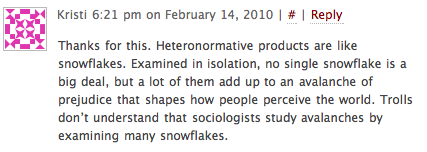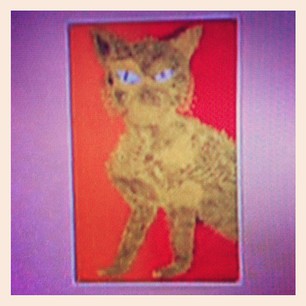In recent posts, I’ve mentioned my dislike of TED talks. Admittedly, this dislike is somewhat visceral and not based on my watching or studying a lot of them. I’m not a big fan of the lecture-style and the cultivation of an elite group of experts who dazzle and delight (entertainment is the “E” in TED, after all) a mostly anonymous and silent audience. The audience depends on the type of TED talk; sometimes they are present and very responsive, like both talks below. This morning, I randomly came across two recent TED talks that address concepts that are central to my own thinking and practicing of troublemaking: 1. cultivating/valuing wonder and 2. asking the question, “why?”
Disruptive Wonder
Here’s how she describes her talk:
Aside from just showing/explaining pictures, the talk makes the case for creating absurdist/surreal work that disrupts our preconceived notions about the world through small, intimate experiences. This type of work can defy conventional expectations by presenting the hidden “talents” of everyday things that we easily take for granted. On a handheld level, these projects rail against unnecessary/unhelpful assumptions—the kind that lurk in the unexamined, quotidian corners of our day-to-day. In these very places of non-examination, the tiniest of subversions can open up small, alternate realities and become amplified into (modest) conversion experiences about our surroundings.
I must admit that I found this talk to be very interesting. I love the idea of Disruptive Wonder and the connections it draws between social justice and creative re-imaginings of the world (through various art projects). While she never explicitly links her work with any movements (like feminism), I see connections with both queer and feminist visions for making trouble and challenging the status quo. I love her last line:
By rejecting normal order, by messing things up, and by rearranging the pieces, we can expand our notion of what we demand from reality. So today, I want to put forth this idea that an avenue to better is for a million teeny-tiny disruptions to whatever’s sitting in front of you. So go mess with the complacently rational!
Her website is really cool and so are her own projects of disruptive wonder (she describes 4 in her talk). Note: I found Kelli Anderson’s TED talk via a tweet from brain pickings.
Why?
The other TED talk that I want to mention is Jacob Soboroff’s “Why for a Change“:
In this talk, Soboroff discusses the importance of asking why, in general and with one particular question, “Why (do we vote on) Tuesday?” He discusses how asking “Why Tuesday?” might help us to find solutions to low voter turnout. When you begin to ask this question, you can imagine other ways (and other days) for voting; Why Tuesday? becomes Why not another day?, like the weekends when more people would have time to vote.
Soboroff focuses all of his attention on asking why Tuesday to politicians (mostly, but not exclusively white male politicians). Why not ask people on the street the same question: Why Tuesday? Or, what about: Why does voting on Tuesday make it hard for you to vote? or, Why don’t you vote? Maybe they should add a “how” question here too: How can we make it easier for you to vote? I really appreciate Soboroff’s emphasis on valuing “why,” but I think it could benefit from some feminist awareness; asking why is good, but we need to expand (beyond those in power and at the top) who we ask and whose answers we take seriously.



